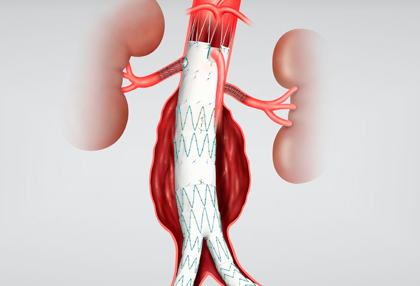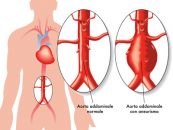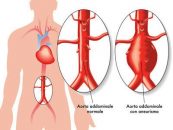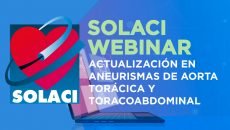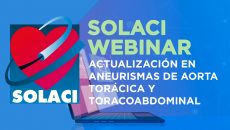Proximal type 1 endoleaks after endovascular abdominal aortic aneurysmal repair are challenging to solve, with no existing consensus on the proper solution. This work compared the most radical solution to the problem vs. a more conservative—though still challenging—option. The first one was the surgical explantation of the endoprosthesis with aortic reconstruction, while the more “conservative”…
Screening for Intracranial Aneurysm in Patients with Coarctation: Is It Cost-Effective?
Patients with a history of coarctation of the aorta have a higher prevalence of intracranial aneurysm and frequently suffer subarachnoid hemorrhage at younger ages than the general population. Read also: FREEDOM with FFR: Different Outcomes? Adding a screening stage at age 30—instead of just at ages 10 and 20—is cost-effective. Known data about the prognosis…
SOLACI PERIPHERAL | 5th Clinical Case: Abdominal Aortic Aneurysm with Hostile Neck
New clinical case from SOLACI PERIPHERAL! This time, we present a case featuring an abdominal aortic aneurysm with hostile neck. With this, we wrap up an intense year during which we published 5 clinical cases to deepen and stimulate the exchange between Latin American interventionist colleagues. Tell us what you think about this case using…
Aortic Aneurysms Treated with Endologix AFX Require Special Followup
An FDA document recently published reminds doctors and patients of the need of annual follow up of abdominal aortic aneurysm patients receiving Endologix AFX endoprostheses, with imaging, and for life. The reason behind this recommendation is the risk of type III leaks. In 2019, the FDA had alerted us against this issue after finding a…
Can We Lower the Cutoff Threshold in Abdominal Aortic Aneurysms?
A new diagnostic tool might change the classical abdominal aortic aneurysm (AAA) cutoff thresholds of 5.5 and 5 cm for men and women, respectively. The new ultrasound speckle tracking technology can study AAA wall motion in real time and has the potential to become the new standard for diagnostic and therapeutic decisions. This study looked…
SOLACI PERIPHERAL | 4th Clinical Case: Thoracic Aortic Dissection in Patient with Complex Arch
A new clinical case to keep learning with colleagues! Today, we present a Thoracic Aortic Dissection in Patient with Complex Arch. This is the 4th case for SOLACI Peripheral, which continues its mission: to deepen knowledge exchange among Latin American interventional cardiologists. Tell us what you think about this case using the comments section in this…
SOLACI Peripheral Webinar | Update in Thoracic and Thoracoabdominal Aortic Aneurysms
Watch again our Webinar on “Update in Thoracic and Thoracoabdominal Aortic Aneurysms” on our Youtube account. We are interested in your opinion. Please, leave your comments, thoughts, questions, etc., below. They will be most welcome.
Webinar SOLACI Peripheral | Update on Thoracic and Thoracoabdominal Aortic Aneurysms
We are interested in your opinion. Please, leave your comments, thoughts, questions, etc., below. They will be most welcome.
Infarction, Stroke and Aortic Emergency Syndromes in the Shadow of the Pandemic
The coronavirus pandemic has had a negative impact on the most pressing cardio and neurological emergencies, such as strokes or aortic dissection. These emergencies are normally treated in high complexity centers, which is why it is relatively simple to analyze the number of transfers before and after the pandemic. For some time, care centers have…
SOLACI PERIPHERAL | 2nd Clinical Case: Juxtarenal Abdominal Aortic Aneurysm
SOLACI’s Department of Peripheral Endovascular Interventions brings a new challenging clinical case for the whole Latin American medical community so as to continue fostering and sharing scientific knowledge and experience among peers. Tell us what you think about this case and its resolution using the comments section in this post, and answer the questions featured…
Detection of Late Complications After EVAR
This work addressed the occurrence of complications after endovascular aortic aneurysm repair (EVAR) for the treatment of infrarenal abdominal aortic aneurysms in a cohort of 454 patients with a 5.2-year follow-up. About 25% of patients experience complications of some kind. As opposed to other studies, here, the vast majority of those complications were asymptomatic and had…
